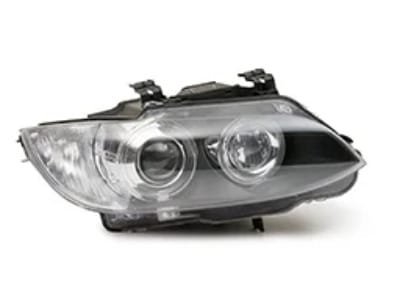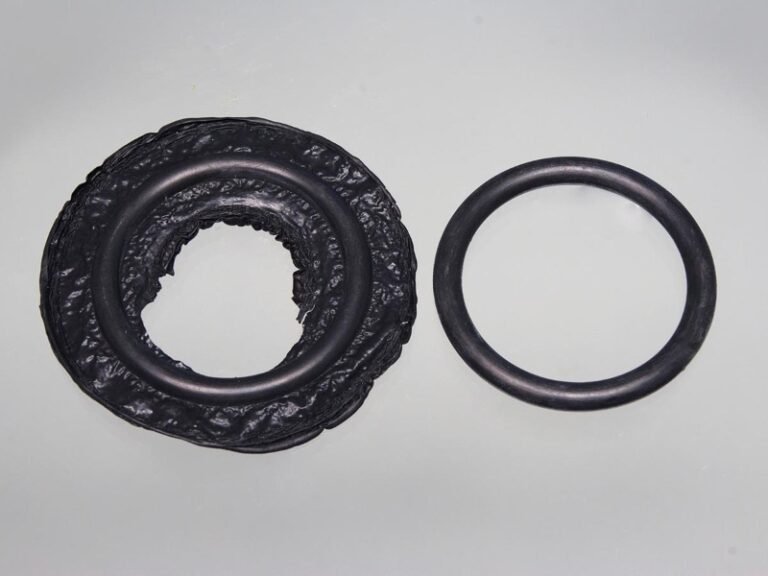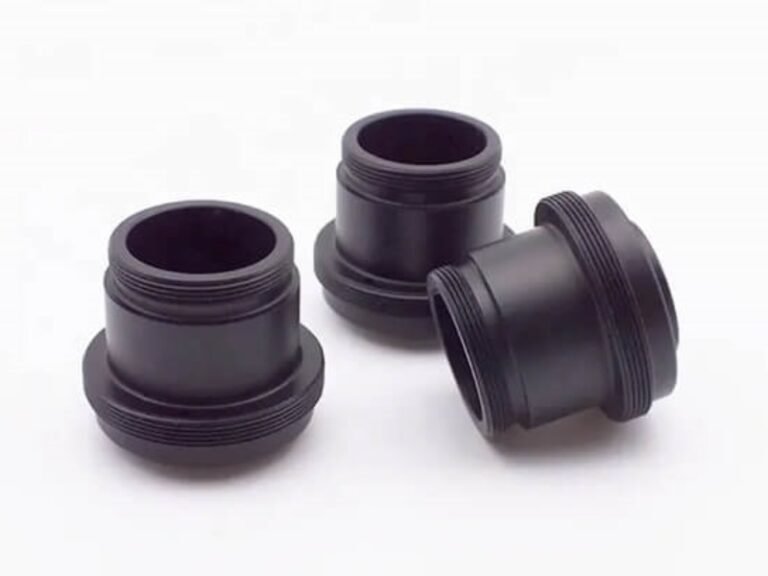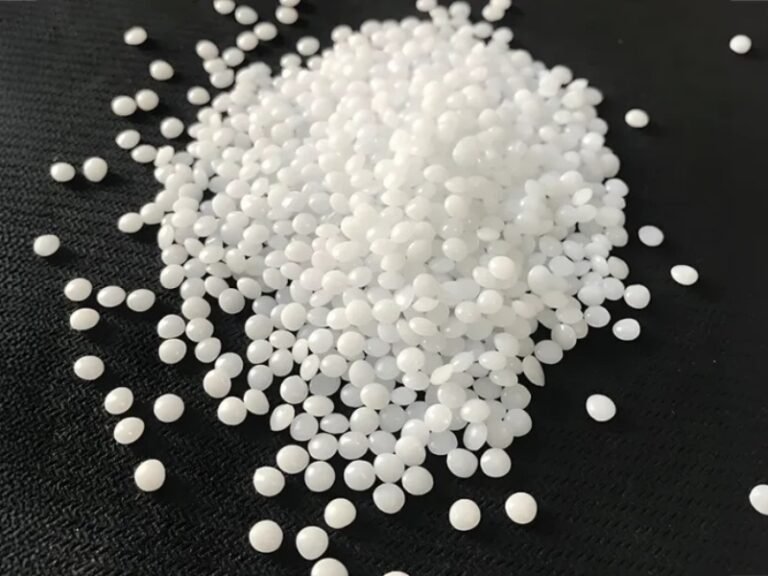Automotive headlights manufacturing process blends advanced materials, precise design, and custom design to meet stringent safety and aesthetic standards. The headlights are not onl vehicle components, but also the safety parts in vehicles. This article explores the types of headlights, materials used, design conditions and manufacturing steps.
Types of Automotive Headlights
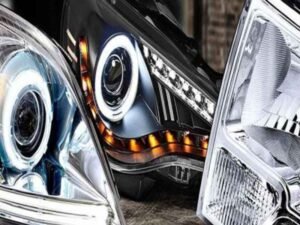
Automotive headlights come in several types, each with distinct characteristics suited to various driving conditions.
Halogen Headlights
Halogen headlights are the traditional lighting technology that uses a tungsten filament enclosed in a halogen gas-filled bulb, producing a warm yellowish light. These headlights are widely appreciated for their affordability and ease of replacement. Despite their widespread use, halogen lamps typically have lower luminous efficiency and shorter lifespans compared to newer lighting technologies.
High-Intensity Discharge (HID) Headlights
HID headlights, also known as xenon lamps, use electrical arcs between electrodes within a gas-filled tube to produce bright, intense light. They offer better luminosity and energy efficiency compared to halogen bulbs and provide a longer service life. However, HID headlights require complex electronic ballasts and tend to have higher manufacturing costs.
Light Emitting Diode (LED) Headlights
LED headlights have become the dominant technology in automotive lighting due to their high energy efficiency, extended lifespan, quick response time, and design flexibility. While their upfront cost is higher, their durability and energy efficiency make them cost-effective over time.
Adaptive Headlights
Adaptive headlights elevate safety by dynamically adjusting beam direction based on steering, speed, or road conditions. Using sensors and motors. Found in high-end models, adaptive headlights require sophisticated electronics and precise integration during manufacturing. Their complexity increases production costs but enhances driver visibility and safety, marking them as a premium feature in modern vehicles.
Materials Used in Automotive Headlight Manufacturing
Automotive headlights comprise several critical components such as lenses, reflectors, housings, and electronic elements. These parts require materials balancing strength, thermal stability, optical clarity, and environmental resistance.
Polycarbonate (PC)
Polycarbonate is a high-molecular polymer with exceptional mechanical strength, transparency, and dimensional stability. PC is ideal for lenses, fog lights, reflectors, and aluminized decorative pieces.
Polypropylene (PP)
PP offers excellent electrical insulation, chemical corrosion resistance, and heat resistance. Cost-effective and lightweight, it is employed in tail light covers, decorative panels, wire harness channels, and headlight housings.
PMMA (Acrylic)
Known as organic glass, PMMA boasts a light transmittance of over 92%. Its rigidity, chemical resistance, and shape retention make it ideal for optically transparent lenses and covers.
ABS and PC/ABS Alloy
ABS, a terpolymer of acrylonitrile, butadiene, and styrene, is often blended with PC to create PC/ABS alloys with enhanced heat resistance. These materials are used for rear light casings and decorative panels.
PBT (Polybutylene Terephthalate)
PBT reinforced with glass fibers, it provides low friction, thermal stability, and excellent electrical insulation, making it suitable for decorative rings and adjustment device brackets in front lights.
PET (Polyester)
PET, a thermoplastic polyester, is increasingly used for headlight decorative rings due to its superior heat resistance, better processing capabilities, and lower cost compared to heat-resistant PC.
Nylon (PA)
Nylon offers toughness and stability. Glass fiber-reinforced nylon 6 or 66 is used for screws and brackets, while aromatic PA offers higher heat resistance and strength for critical adjustment structures.
PEI (Polyetherimide)
An amber-colored plastic with inherent flame resistance and high-temperature stability, PEI is used in advanced headlight reflectors.
BMC (Bulk Molding Compound)
A thermosetting material made from short-cut glass fibers and unsaturated polyester, BMC is used for reflectors due to its high dimensional stability, surface gloss, and resistance to water, oil, and corrosion.

Custom Automotive Moulding Service
Automotive Headlight Design Requirements
Product Design Requirements
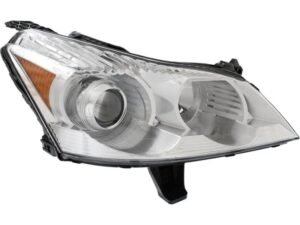
In the headlamp design stage, we recommend focusing on manufacturability and assembly reliability, rather than just optical performance or regulatory compliance. Designs should ensure uniform wall thickness, proper chamfers, and well-planned parting lines and holes to enable smooth injection molding or casting, minimizing warpage, voids, and secondary processing. Material selection should balance optical properties, heat and impact resistance, and cost, while accounting for different material shrinkage to avoid assembly issues. Components such as lenses, seals, and clips should also be optimized in advance to ensure proper sealing, waterproofing, and easy assembly. Thermal management and surface treatment are equally important, with lens thickness, texture, and coatings carefully considered for both optical performance and manufacturability.
Mold Design Requirements
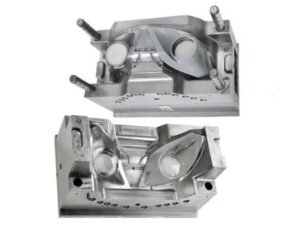
Injeciton Mold Precision: Molds must achieve high accuracy to ensure optical clarity and complex geometries for lenses and reflectors.
Venting Systems: Effective venting systems within molds prevent trapped air during injection molding, which can cause defects like bubbles or voids in polycarbonate lenses.
Material Durability: Molds, typically made from high-grade steel or aluminum, must withstand repeated high-pressure injections (up to 1,500 bar) without deformation.
Cooling Systems: Integrated cooling channels regulate mold temperature during injection, preventing warping or shrinkage of molten plastics like polycarbonate or polypropylene.
Surface Finish: Molds for lenses require mirror-like polished surfaces to achieve optical clarity. Reflector molds may incorporate textured finishes for light diffusion.
Automotive Headlight Manufacturing Steps
The manufacturing process of automotive headlights can be categorized into several stages:
Design and Prototyping
The process begins with detailed 3D modeling and digital simulations. Prototypes may be produced using 3D printing or CNC machining to test form, fit, and function before full-scale production.
Mold Fabrication
Creating the molds requires precision machining using CNC techniques to carve out negative cavities matching the headlight component designs. Mold materials and surface treatments are selected to meet the surface finishes requirements.
Material Preparation
Select and prepare raw materials, primarily thermoplastics like PC, ABS, and PMMA based on the requirements.
Injection Molding
Molten plastic is injected at high pressure into the molds through a controlled process. Ejected after cooling and solid.
Post-Processing
After ejection from the molds, parts undergo finishing processes such as trimming, polishing and coatings.
Assembly
Headlight components—including lenses, reflectors, electronic boards, bulbs, housings, and connectors are assembled with high precision and sealing mechanisms.
Quality Control
Rigorous testing comprising optical performance, dimensional accuracy, thermal resistance, and durability assessments.
Custom Headlight Process
Bellow are the standard manufacturing processes for custom manufacturing headlight components:
CNC Machining: Computer Numerical Control (CNC) machining is used to fabricate high-precision molds and components, such as headlight housings and aluminum reflectors.
3D Printing: Additive manufacturing, or 3D printing, is employed during the prototyping phase of custom headlights.
Injection Molding: The widely used method for custom headlight production, injection molding automotive applies custom-designed molds to shape high-grade polycarbonate lenses or polypropylene housings.
Laser Cutting and Engraving: Laser technology is used to create precise cuts or engravings on lenses or decorative panels, adding unique patterns or brand logos.
Surface Coating: Custom headlights often require specialized coatings, such as UV-resistant or anti-scratch layers, applied to polycarbonate or PMMA lenses.
Partner with Zhongde for Custom Automotive Components
Leveraging advanced techniques like CNC machining, 3D printing, and plastic injection molding automotive parts, Zhongde produces automotive parts and headlight components that meet customers’ specific requirements. Welcome to partner with Zhongde for custom headlight parts solutions.
